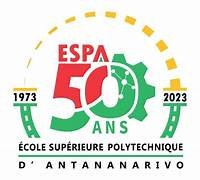Environmental assessment of Malagasy pavement materials: case of cold mix asphalt and chip seal
Résumé
Climate change and environmental issues force each country to establish the carbon balance and the energy balance in its sectors of activity. However, Malagasy road engineering, where the environmental assessment has not known a real quantification of environmental impacts, focuses more on the technical and financial aspect of the project. Thus, this present work has an interest in attaching to Malagasy cold hydrocarbon products, Greenhouse gas emission (GHG) and Primary Energy Consumption (PEC) factors. We use here the methodologies of the Life Cycle Assessment on System Boundaries (SB) going “from the cradle to the construction phase”. Inventory data correlates with normative road engineering techniques and energy aspects, and then confirms Madagascar's insularity. The SIMA PRO software thus, translates the inventory data into terms of impacts. By using bitumen emulsion as a binder, the results conclude a greenhouse gas (GHG) emission factor and an energy consumption of 63.4 kgCO2eq/m3 and 904 MJ/m3 for Dense Cold Asphalt 0/12.5 (DCA 0/12.5), then 0.298 kgCO2eq/m² and 4.28MJ/m² for the single chip seal 4/6 (SCS 4/6), likewise 0.597 kgCO2eq/m² and 8.62MJ/m² for the Double Chip Seal 2/10 (DCS 2/10), also 0.85 kgCO2eq/m² and 12.3MJ/m² for double chip seal 4/14 (DCS 4/14). Using the Cut-Back, we retain the values of 109 kgCO2eq/m3 and 2440 MJ/m3 for DCA 0/12.5, 0.479 kgCO2eq/m² and 11.6 MJ/m² for the single chip seal 4/6 (SCS 4/6), 0.89 kgCO2eq/m² and 20.8MJ/m² for double chip seal 2/10 (DCS 2/10), also 1.28 kgCO2eq/m² and 30.2MJ/m² for double chip seal 4/10 (DCS 4/10).
Cold Asphalt, Surface Coating, Bitumen Emulsion, Cut-back, Life Cycle Assessment, Greenhouse Gas
References
[1] MEDD. (2015).\"Charte de l’environnement Malagasy Loi n° 2015-003\", pp. 1-14. https://faolex.fao.org/docs/pdf/mad142814.pdf.
[2] MEDD. (2004). \"Décret n° 99-954 du 15 décembre 1999 modifié par le décret n° 2004-167 du 03 février 2004 relatif à la Mise en Compatibilité des Investissements avec l’Environnement\". https://www.pnae.mg/evaluation.html.
[3] Oanh, T. T.; Quoc, N. T.; Dieu, P. T. Int. J. Energy Environ. Econ. 2020, vol28, 87-101.
[4] Tateishi; Henrique, R.; Priscilla, F. B. Int. J. Energy Environ. Econ. 2017, vol25, 169-175.
[5] Panagoiotis, P. Int. J. Energy Environ. Econ. 2020, vol26, 143-157.
[6] Santos, J.; Ferreira, A.; Flintsch, G.; Santos, L. R. « A life cycle assessment model for pavement management: road pavement construction and management in Portugal ».
[7] Balaguera, A.; Carvajal, G. I.; Albertí J.; Fullana-i-Palmer P. « Life cycle assessment of road construction alternative materials: A literature review », Resour. Conserv. Recycl., vol. 132, p. 37‑48, mai 2018, doi: 10.1016/j.resconrec.2018.01.003.
[8] Hakan, S. (2001). « Life cycle assessment of road: a pilot study for inventory analysis ». https://www.ivl.se/download/18.34244ba71728fcb3f3f57f/1591704221839/B1210E.pdf
[9] Thives, L. P.; Ghisi E. « Asphalt mixtures emission and energy consumption: A review », Renew. Sustain. Energy Rev., vol. 72, p. 473‑484, mai 2017, doi: 10.1016/j.rser.2017.01.087.
[10] Dash, S. S.; Panda M. « Influence of mix parameters on design of cold bituminous mix », Constr. Build. Mater., vol. 191, p. 376‑385, déc. 2018, doi: 10.1016/j.conbuildmat.2018.10.002.
[11] Al-Busaltan, S.; Nageim H. Al; Atherton, W.; and Sharples, G. « Green Bituminous Asphalt relevant for highway and airfield pavement », Constr. Build. Mater., vol. 31, p. 243‑250, juin 2012, doi: 10.1016/j.conbuildmat.2011.12.065.
[12] Brosseaud, Y. (2013). « Écologiques, sécuritaires, confortables, les enrobes de demain se feront autrement : présentation des enrobes tièdes ». http://www.ampcr.ma/actes/7eme_congres_national_de_la_route/CONGRE/TH4/TH4_12.pdf.
[13] Milad, A. « A Comparative Review of Hot and Warm Mix Asphalt Technologies from Environmental and Economic Perspectives: Towards a Sustainable Asphalt Pavement », Int. J. Environ. Res. Public. Health, vol. 19, no 22, p. 14863, nov. 2022, doi: 10.3390/ijerph192214863.
[14] Shobhit, J. and Bhupendra S., « Cold Mix Asphalt: An Overview », doi: https://doi.org/10.1016/j.jclepro.2020.124378.
[15] Takamura, K.; James, A. « Paving with asphalt emulsions », in Advances in Asphalt Materials, Elsevier, 2015, p. 393‑426. doi: 10.1016/B978-0-08-100269-8.00013-1.
[16] CEBTP. « Guide pratique de dimensionnement des chaussées pour les pays tropicaux »; Ministère des relatons extérieures, Coopération et du Développement : France, 1984.
[17] EUROBITUME (2012). « Life cycle inventory : bitumen ». https://www.eurobitume.eu/fileadmin/pdf-downloads/LCI%20Report-Website-2ndEdition-20120726.pdf.
[18] Wang, H.; Gangaram R. (2013). « Life Cycle Assessment of Asphalt Pavement Maintenance ». https://cait.rutgers.edu/wp-content/uploads/2018/05/cait-utc-013-final.pdf.
[19] Chappat, M. ; Bilal J. (2003). « La route écologique du future-Analyse du cycle de vie-Consommation d’énergie et émission de gaz à effet de serre », COLAS, sept. 2003.
[20] Mazumder, M.; Sriraman, V. ; Kim, H. H.; Lee, S.J. « Quantifying the environmental burdens of the hot mix


